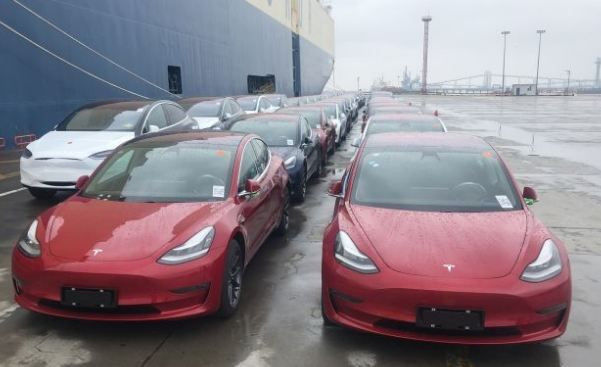Tesla Stock Drops 11% On Q2 Earnings Loss Despite Record Delivery

Tesla Inc. disappointed big time with its second quarter earnings report, missing targets on most key financial metrics, but reporting record production and deliveries that might lead to a turnaround in Q3.
News of Tesla’s larger than expected miss in EPS, revenue and income dragged down its stock to $235.60 in afterhours trading, 11.05% lower than its opening of $259.17. The company’s market cap on Wednesday fell to $46.8 billion.
Key financial highlights from Tesla’s Q2 report saw $6.35 billion in revenue, a loss of $2.31 per share, a non-GAAP loss per share of $1.12 and a GAAP net loss of $408 million.
On the other hand, analysts were expecting revenue of $6.44 billion, a non-GAAP loss per share ranging from $0.40 to $0.55 per share and a GAAP net loss in the region of $300 million.
Tesla reaffirmed its full-year delivery guidance despite these discouraging metrics. The company still expects to sell anywhere from 360,000 to 400,000 vehicles this year. Most of these will be the Model 3 luxury executive four-door sedan, its best selling electric vehicle (EV) by far.
In Q2, Tesla reported record production of 87,048 EVs and record deliveries of 95,356 EVs, surpassing its previous quarterly records of 86,600 EVs produced and about 91,000 EV deliveries set in Q4 2018. It described these achievements as “an important milestone as it represents rapid progress in managing global logistics and delivery operations at higher volumes.”
Tesla’s cash position is also something to cheer about. After a capital infusion of close to $3 billion in May, Tesla now has $5.0 billion on hand.
Tesla said that because of its growth and operational improvements, it generated $614 million of free cash flow (operating cash flow less capital expenditures) in Q2. Combined with its public offering of equity and convertible bonds (with net proceeds of $2.4 billion), Tesla ended Q2 with $5.0 billion in cash and cash equivalents, the highest level in its history.
Tesla needs all the money it can lay its hands on since it’s still spending heavily on its main projects while being increasingly strapped for funds. Tesla’s money is going towards the completion of its Gigafactory 3 in Shanghai (which is expected at the end of the year), producing its new Model Y SUV and Tesla Semi. It’s also spending on expanding and updating its Supercharger and service networks.
Tesla delivered some 158,200 EVs to customers in the first six months of 2019 but has to deliver more than 200,000 in H2 to attain the low-end of its guidance. It says it has a weekly run-rate of 7,000 Model 3s, and plans to produce 10,000 Model 3s weekly by the end of 2019.
Production numbers for the Model 3 continued to improve in Q2, breaking a monthly record in May and again in June. The Tesla Factory at Fremont, California (its main production facility) has a production capacity of 7,000 Model 3s per week. Tesla is working to increase this total.
“We aim to produce 10,000 total vehicles of all models per week by the end of 2019,” said Tesla.
This total will include 3,000 EVs per week to be produced at the new Gigafactory 3 still under construction. Reports indicate Gigafactory 3 should start rolling-out its first EVs by November.
© Copyright IBTimes 2025. All rights reserved.





















